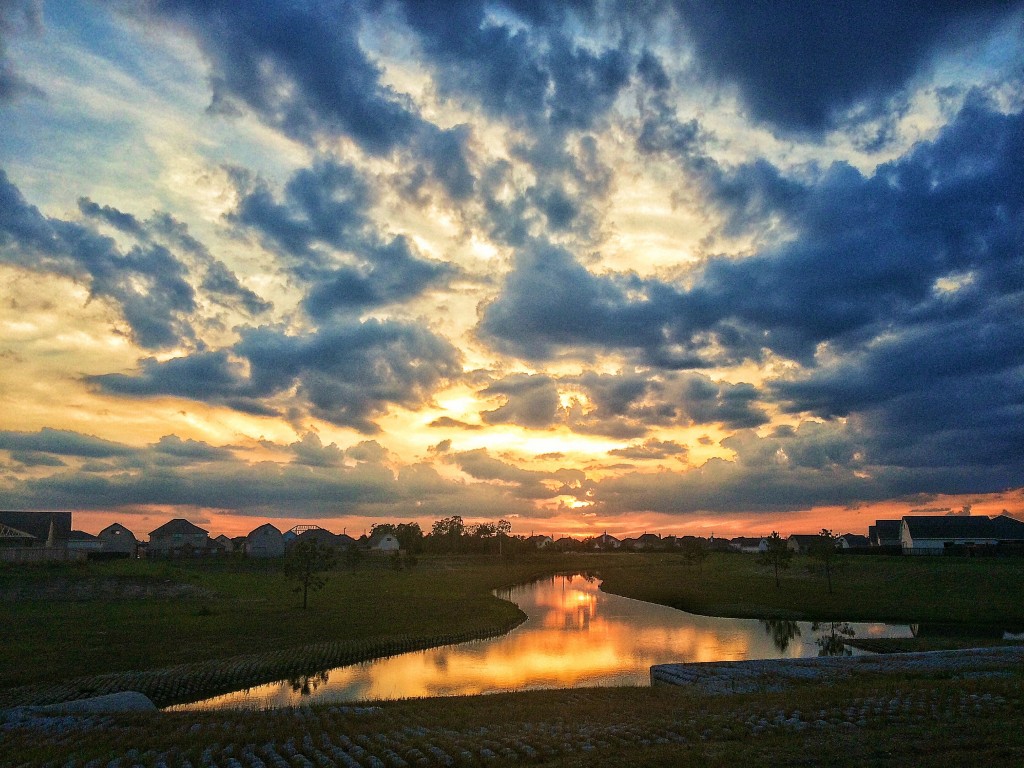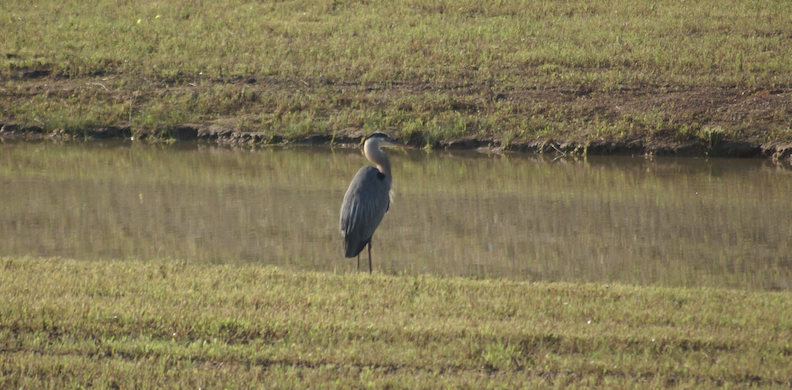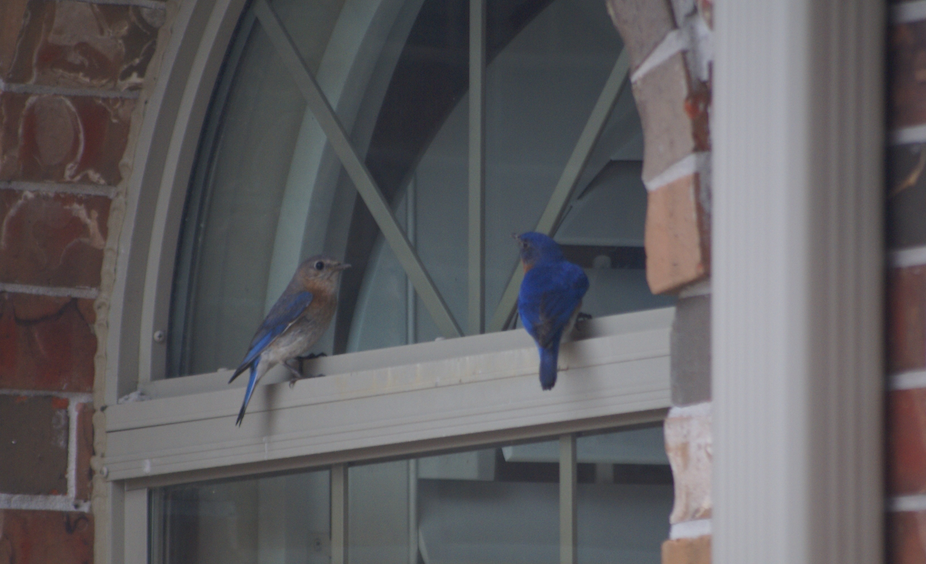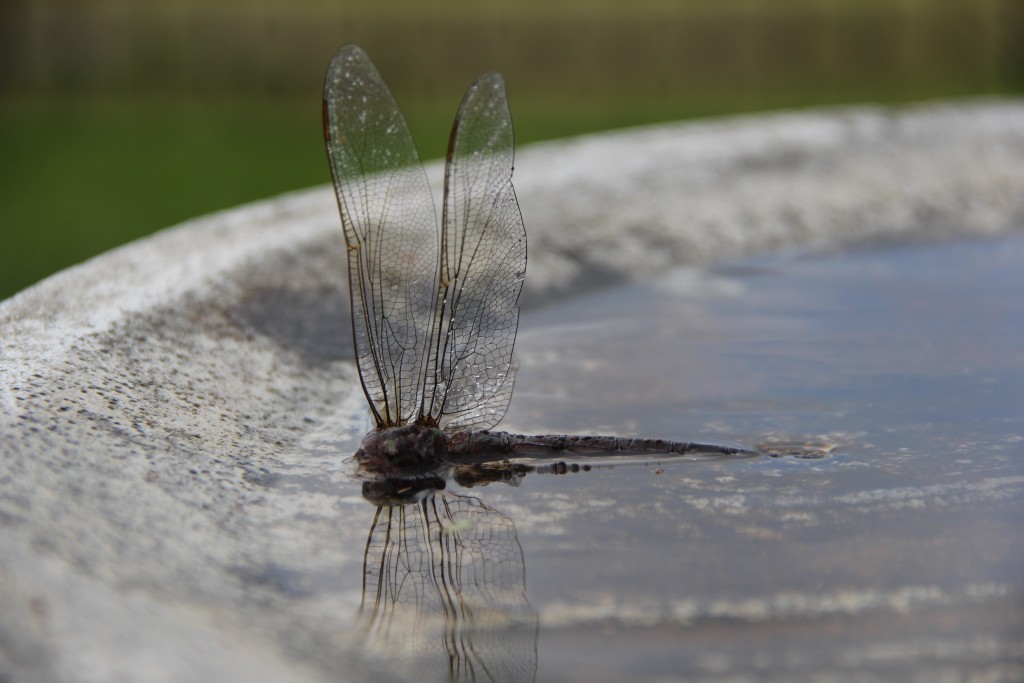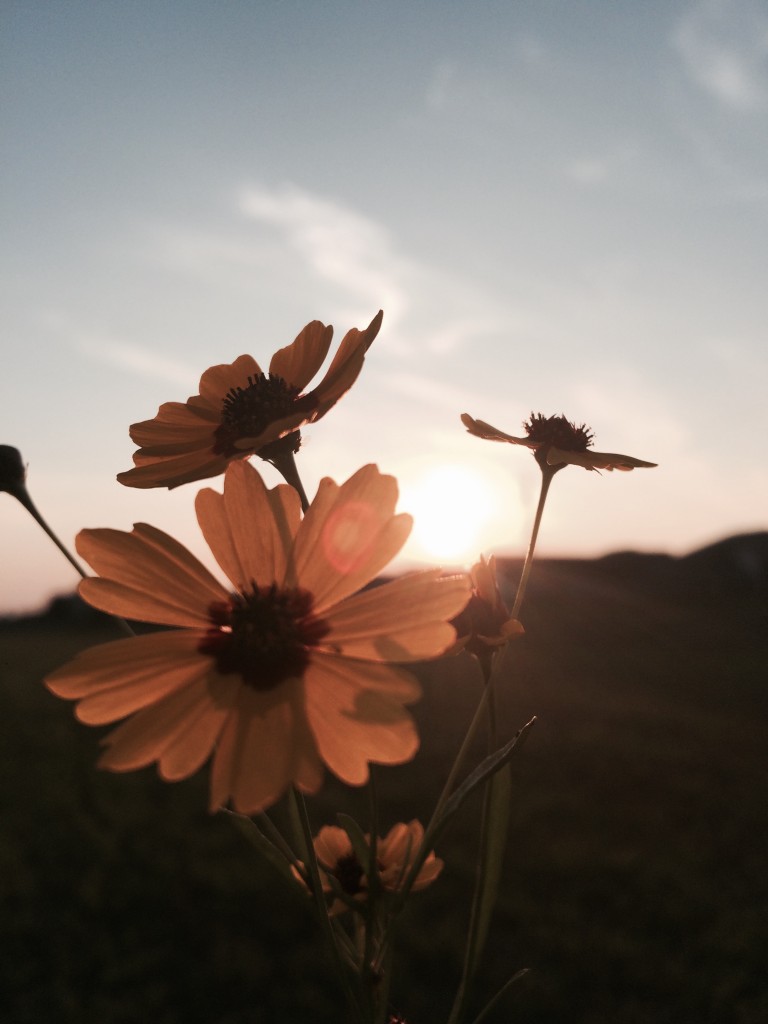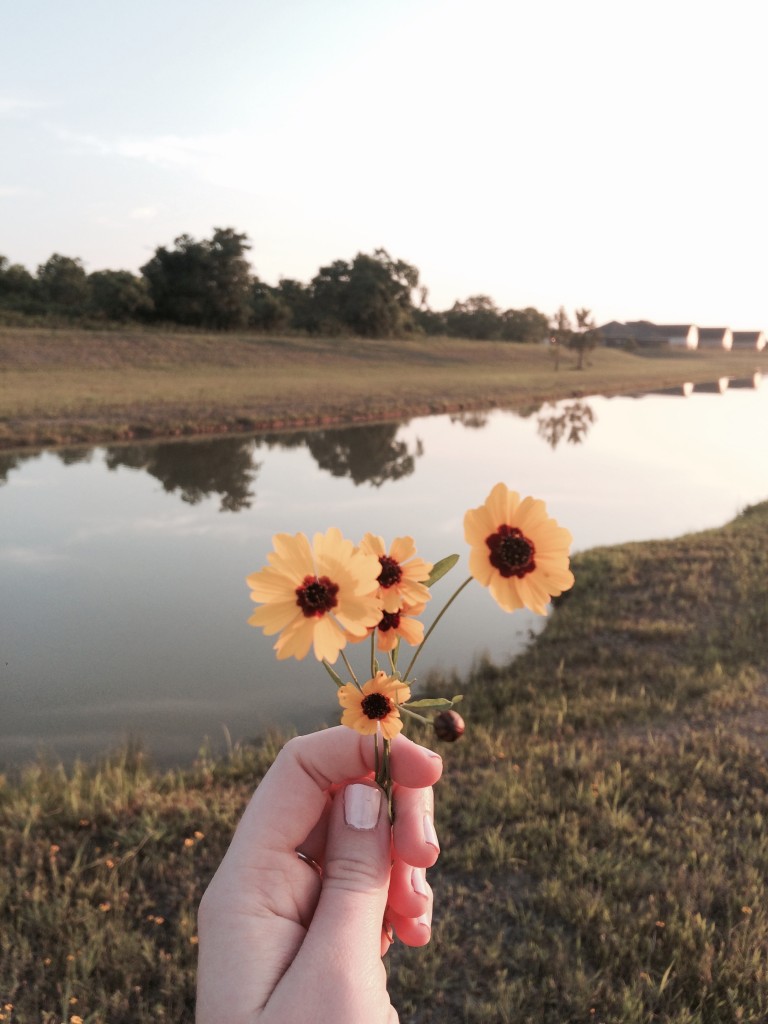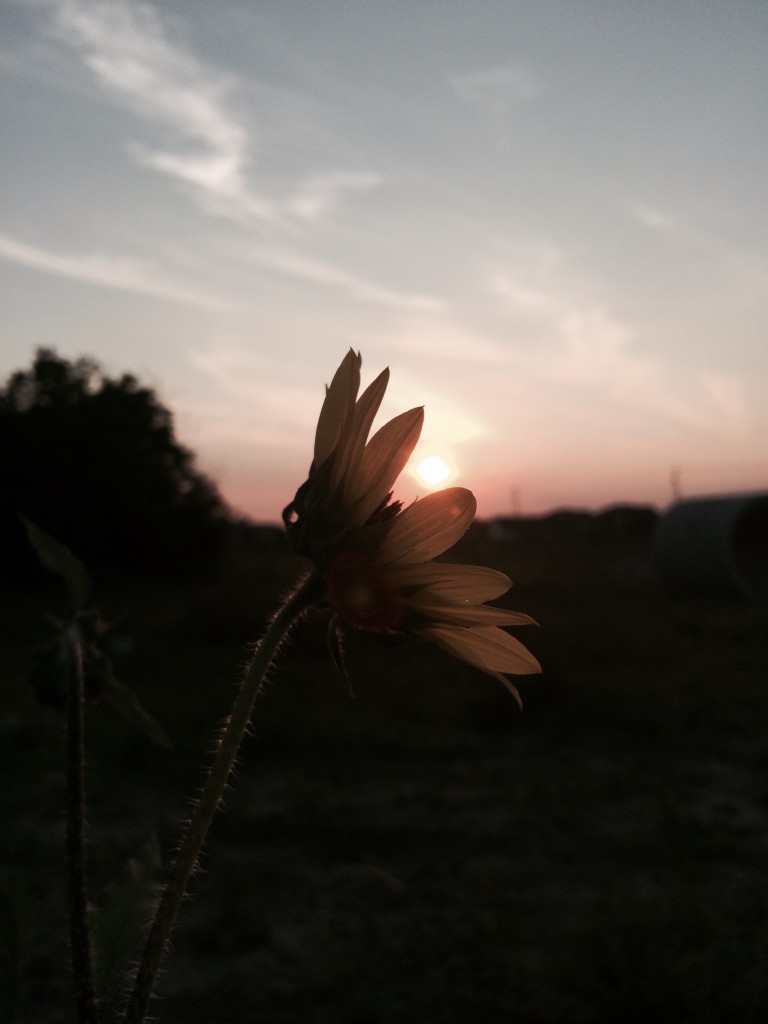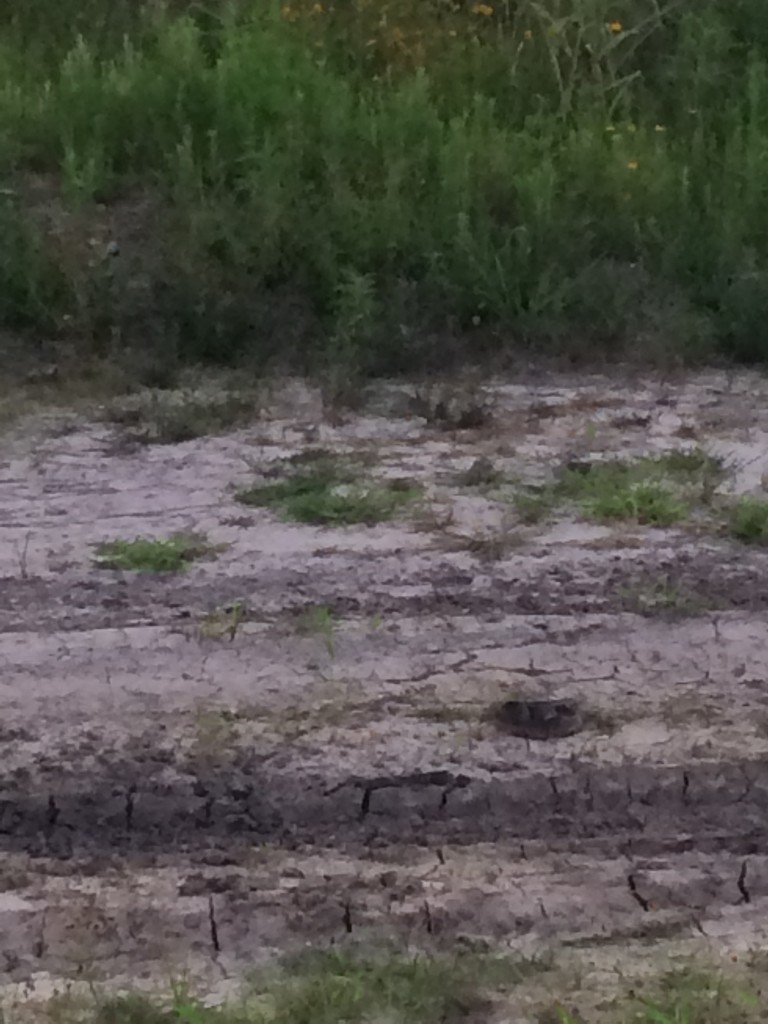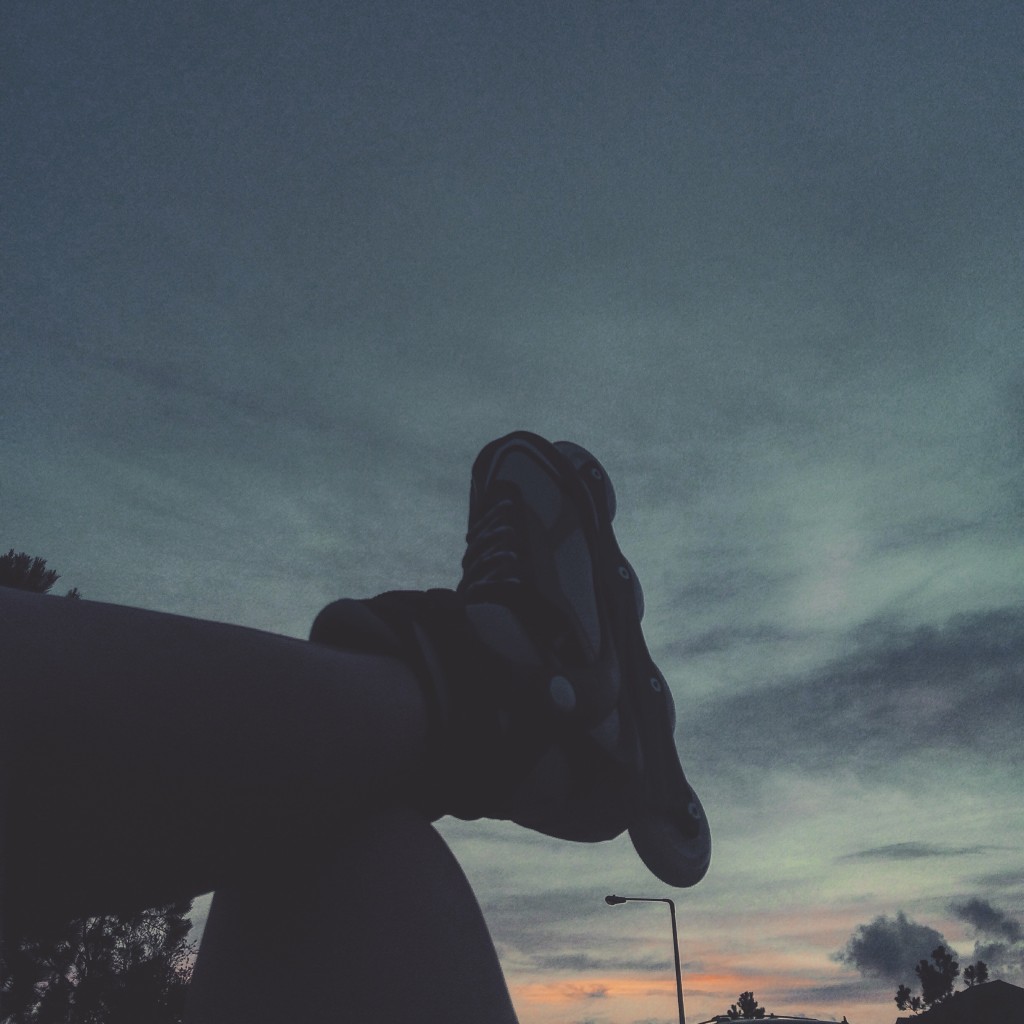Over the summer I did most of my observations near my home in Houston, Texas. However, finding time to explore unknown nature paths and parks was challenging due to my work schedule, so I settled for the closet nature I could get. My neighborhood is a new neighborhood and because of this there is a decent amount of woods still untouched by man near my home. I would take time to sit out on a near by dirt hill (man made from the developing houses) and watch the sunsets. This is when I found nature most peaceful but also the most active. Tiny little bugs and nats would fly around in the air, as well as bees and the occasional dragon fly from the wildflowers that were growing around me. I ran into a couple of wasp nests too. There is a man made retention pond that separates my house and the tree line. I saw an unbelievable amount of birds like Seagulls that came from the nearby gulf, tiny green Parakeets and Purple Martins. These along with the birds shown below were just a handful of the species I observed.
According to and identified by using: Birds of Texas –Field Guide by Stan Tekiela.[1]
[1] Tekiela, Stan. Birds of Texas –Field Guide. City of Publication: Publisher, 2004. Medium of Publication.
While watching Wild France[1]
[1] Wild France. Dir. Frédéric Fougea. A Boréales-Terra Mater Factural Studios. Thirteen Productions LLC, 2015. Film.
shown in class, I learned something about dragonflies that I did not know before. When they go through metamorphosis, or shed their outer skin, their legs are not hard enough to use. They have to hang and wait while dangling above the ground till their legs are of use to them. This can be dangerous due to lurking prey. But once their legs are hardened, they can finish the process of shedding by pulling their bodies out of their shells. Their wings make a debut and they begin their life as a dragonfly. This is a photo of a dead dragon fly I found in a bird bath. I could not figure out what had happened to the dragonfly but I did document it.
Earlier in this post I mentioned wildflowers and the little bugs that took liking to them. I absolutely loved to capture some of these flowers during sunset when the sun would give the perfect backlight to the petals.
I had recently noticed the popularity of wildflowers along the side of highways and roads near my home. And then I heard of the wildflower initiative program. According to TXDOT[3]
[3] “Wildflower Program.” Texas Department of Transportation. N.p., n.d. Web. 20 Sept. 2015.
, “[they buy] and [sow] about 30,000 pounds of wildflower seed each year.” This is due to the protection of flowers. Also, tourists are warned to be careful when taking photos that they do not trample the flowers because they will eventually die and not grow back. I also found some other interesting articles about the Texas wildflowers which brings us to Austin, Texas. I learned, via wildflower.org[4]
[4] “The Environmental Legacy of Lady Bird Johnson.” Wildflower.org. Lady Bird Johnson Wildflower Center, n.d. Web. 22 Sept. 2015
that Mrs. Johnson is responsible for the national beautification act of 1965. “Lady Bird Johnson [is] the reason why we see wildflowers blooming along the nation’s highways.”
While exploring through the wooded parts behind my house I only came across a few snakes. I never identified it for sure but I am pretty certain it was a water moccasin. Also, according to the Facebook group that my neighborhood has, people saw all kinds of MASSIVE snakes in the recent months. I am assuming it is because of the amount of rain we got and also the work that is being done to some of the surrounding woods due to home construction.
One creepy yet very interesting fact about the land near my house: If you’ve ever heard of the “Texas Killing Fields” or “Calder Killing Fields,” that is the general area as to which my home abides. If you are not familiar with these killings, starting in approximately 1970 30 bodies have been found of girls that were taken and captured. The gas station in which they were assumed to be taken from is maybe 3 minutes from my house now.. VERY creepy if you ask me. One day off record, not during a time of observation but something I feel that is worth mentioning, my neighbor saw Equisearch or Equusearch riding behind our houses along the tree line on horses. Equusearch is defined as, “a search and rescue organization dedicated to searching for missing persons.”
.. So that’s that. “c’est cela.”
“The most beautiful place of all is the one you inhabit, because it’s here that time mingles with space to allow us to explore all its enfolded secrets, to discover its protean diversity ceaselessly renewed through the passing seasons and years. This can only happen in a place where our roots have the time to go down into the earth.”
Bernard Charbonneau, 1991[5]
[5] Bess, Michael. The Light-Green Society: Ecology and Technological Modernity in France, 1960-2000. City of Publication: University of Chicago Press, 2003. Book.
To me this quote from The Light Green Society works perfectly to describe how it felt to observe nature in a known environment such as home. Home is where you form your roots. But for me, home was not actually very “known” environmentally. I still seemed to be learning about myself and the other species around me that shared my home. I observed that after long thunderstorms frogs would become more active. It would be pitch black and all I would hear was the simultaneous croak of who knows how many frogs.
As for my fitbit in relation to my time spent in nature I did not notice a huge distinction in my resting heartrate outside versus inside. I did however notice a difference in my stress level. I felt less overwhelmed in nature and I found myself looking forward to the time I had planned to spend in nature. Observing nature actually gave me motivation to start exercising outside. I bought roller blades and would use the time during sunset to venture outdoors and test my fitbit. I created my own roller blading option and could see how many active minutes and calories I burned during each roller blading excursion. I also noticed that the images I saw of people outside and having fun on instagram would inspire me to want to get up and venture outdoors. The influence of media has recently taken over and has given everyone with access to a screen the itch to become adventurous and explore the world around them.
[1] Tekiela, Stan. Birds of Texas –Field Guide. Published, 2004. Book.
[2] Wild France. Dir. Frédéric Fougea. A Boréales-Terra Mater Factural Studios. Thirteen Productions LLC, 2015. Film.
[3] “Wildflower Program.” Texas Department of Transportation. N.p., n.d. Web. 20 Sept. 2015
[4] “The Environmental Legacy of Lady Bird Johnson.” Wildflower.org. Lady Bird Johnson Wildflower Center, n.d. Web. 22 Sept. 2015
[5] Bess, Michael. The Light-Green Society: Ecology and Technological Modernity in France, 1960-2000. University of Chicago Press, 2003. Book.
